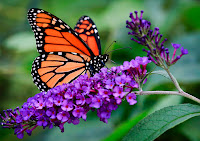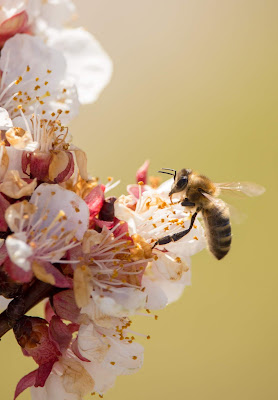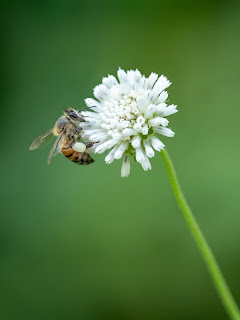 In recent weeks, I have written about how to create an enjoyable outdoor space and how to plant to attract pollinators, now it’s time to take our animal companions into consideration. You can have a beautiful yard and a pollinator-friendly garden, but none of it can be properly enjoyed if mosquitoes and flies are making themselves at home there. And if insects are making you uncomfortable, your pets are also miserable out there.
In recent weeks, I have written about how to create an enjoyable outdoor space and how to plant to attract pollinators, now it’s time to take our animal companions into consideration. You can have a beautiful yard and a pollinator-friendly garden, but none of it can be properly enjoyed if mosquitoes and flies are making themselves at home there. And if insects are making you uncomfortable, your pets are also miserable out there. As we move into summer (some of us already there – it will be 98°F here today), biting insects are coming out. Mosquitoes and flies are annoying pests that go beyond merely being pesky into being hazardous to health and even, in some cases, deadly. Mosquitos are especially dangerous to humans; in fact, they are considered the world’s deadliest animal. You can combine deaths by lions, sharks, snakes, wolves, crocodiles, bears, tigers and humans and not even come close to the number of people killed by mosquitoes. It is not the insect itself that kills, but the diseases that it carries. Many of these mosquito-borne diseases can have calamitous effects on our dogs, horses and other warm-blooded pets.
As we move into summer (some of us already there – it will be 98°F here today), biting insects are coming out. Mosquitoes and flies are annoying pests that go beyond merely being pesky into being hazardous to health and even, in some cases, deadly. Mosquitos are especially dangerous to humans; in fact, they are considered the world’s deadliest animal. You can combine deaths by lions, sharks, snakes, wolves, crocodiles, bears, tigers and humans and not even come close to the number of people killed by mosquitoes. It is not the insect itself that kills, but the diseases that it carries. Many of these mosquito-borne diseases can have calamitous effects on our dogs, horses and other warm-blooded pets. Flies are especially troublesome to pet owners. They are drawn to the animals manure and bodily fluids. Since our pets don’t have hands to swat them away, the poor creatures suffer greatly from flies. Not only are they on the high end of the annoying spectrum, they also carry a myriad of devastating diseases. All of the many fly species have the capability of transmitting diseases, with some of these affecting humans and other directly aimed at other animals. By some accounts, house flies are credited with transmitting at least 65 diseases to humans.
Flies are especially troublesome to pet owners. They are drawn to the animals manure and bodily fluids. Since our pets don’t have hands to swat them away, the poor creatures suffer greatly from flies. Not only are they on the high end of the annoying spectrum, they also carry a myriad of devastating diseases. All of the many fly species have the capability of transmitting diseases, with some of these affecting humans and other directly aimed at other animals. By some accounts, house flies are credited with transmitting at least 65 diseases to humans.Now that I’ve provided the gloom and doom, I’d like to offer some effective solutions to the problem bugs of summer. ARBICO Organics offers a carefully curated selection of products that can be used in, around and on your pets and yard to keep mosquitoes and flies away. If you have horses or livestock, we have you covered there as well. Luckily, much of what you can do to keep biting insects away from your animals will work to keep them from the people in the family as well.
 Repellents, beneficial insects, traps and insecticides all have their place in keeping your garden pet-pest free, but there are other steps you can take to discourage pest insects from coming over to begin with:
Repellents, beneficial insects, traps and insecticides all have their place in keeping your garden pet-pest free, but there are other steps you can take to discourage pest insects from coming over to begin with:Management, management, management: Since mosquitoes breed in standing water (in as little as a bottle cap, see how that works here) and most of the flies you are troubled by breed in manure, it is important to keep things emptied out and cleaned up. Trash, junk piles, tires, flower pots, gutters, lawn ornaments and toys in the yard– all are able to host a mosquito nursery. Walk around, pick things up or turn them over. Responsible animal owners understand manure management and daily pickup may not be feasible, but it bears noting that the cleaner you keep it, the better.
Clip it, cut it, groom it down: While pollinators like tall grass, shrubbery and other “wild” spaces to gather, unfortunately, so do pest insects. There is no right answer on this; you will simply have to decide which insect is your priority. A possible solution would be to groom the areas where you usually gather and create an unkempt area on the opposite end of your space.
 |
| Let's plant catnip, what could happen? |
Plant enemies of mosquitoes: The effort to reduce mosquito numbers can begin as simply as adding plants that repel mosquitoes to your garden. Many of these same plants also repel flies. Repellent plants include Eucalyptus, Marigolds, Basil, Catnip, Lavender, Peppermint, Citronella, Lemon Balm, Rosemary and Pennyroyal. Some of these plants serve a double duty as delicious additions to your table, so planting them is a definite win-win. Scientific studies have shown Catnip to be 10 times as effective as DEET in repelling mosquitoes. Of course, you may have to deal with additional cats in your yard.
Lights out: Many, if not most, insects are drawn to light. But not all light is equal to them. Fluorescent lights are less attractive than incandescent. So, keep lights off near or in kennels, barns or stables. Or light up an area with incandescent light that is far away from you and your animals.
 Zebra camouflage: Recent research has concluded that a zebra’s signature black and white stripes are actually an evolutionary adaptation to keep flies off them. The stripes mess with the fly’s vison and interrupt their ability to land. Apparently, this also works if you put a horse in a black and white coat. You can buy these here, along with fashionable zebra accessories. So, although your horse may feel like a fool in his new suit, he will have fewer flies bothering him.
Zebra camouflage: Recent research has concluded that a zebra’s signature black and white stripes are actually an evolutionary adaptation to keep flies off them. The stripes mess with the fly’s vison and interrupt their ability to land. Apparently, this also works if you put a horse in a black and white coat. You can buy these here, along with fashionable zebra accessories. So, although your horse may feel like a fool in his new suit, he will have fewer flies bothering him.None of these pest control suggestions will work if you have neighbors who do not have the same commitment to the fight as you do. The best solution to that problem is to befriend (or stay friendly to) them and encourage a dialogue around working together on this. Lend a hand to fix the problem; not only can you feel good about that, your own problem will be reduced. And that is all just good karma.
Submitted by Pam


























